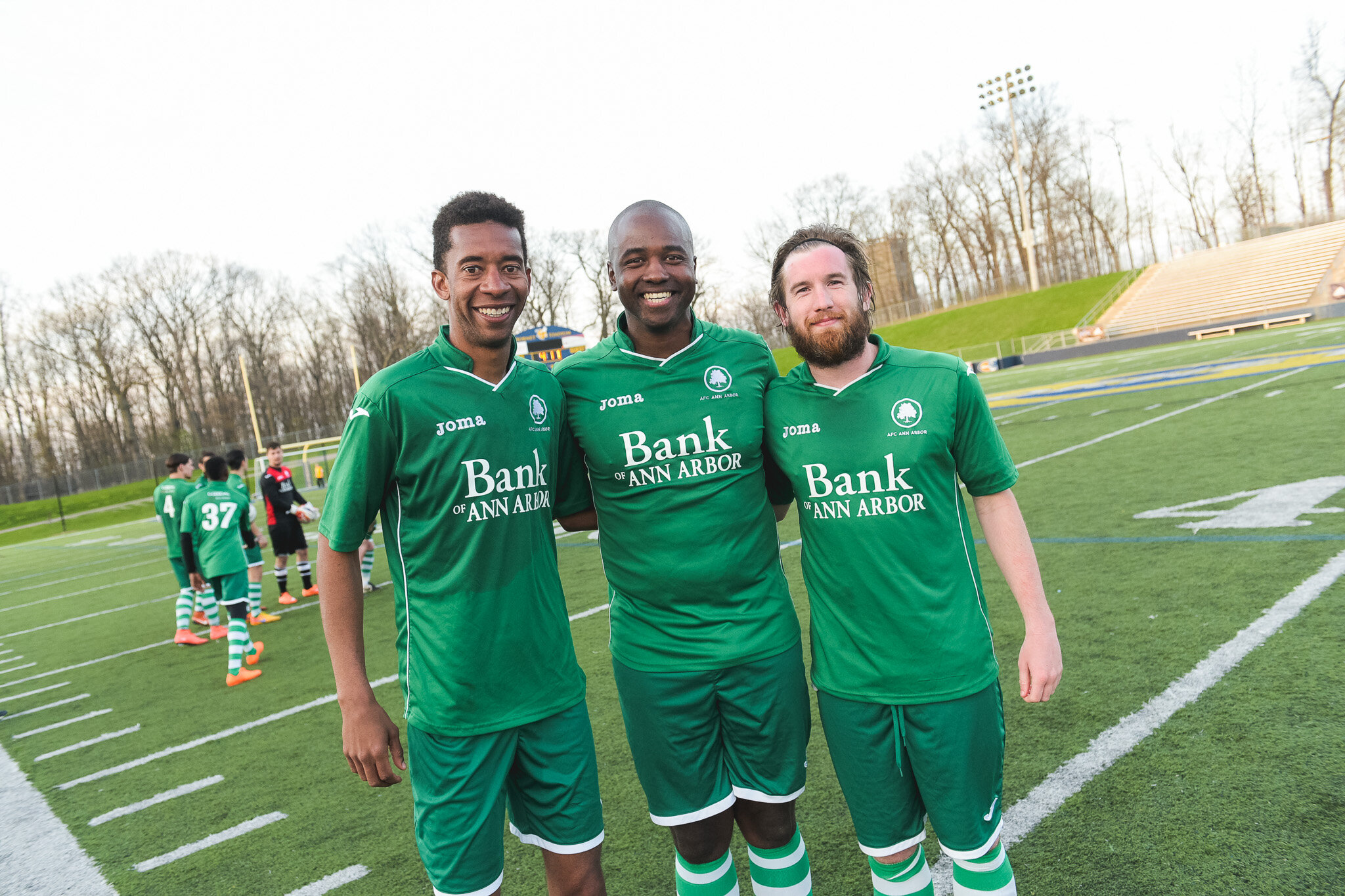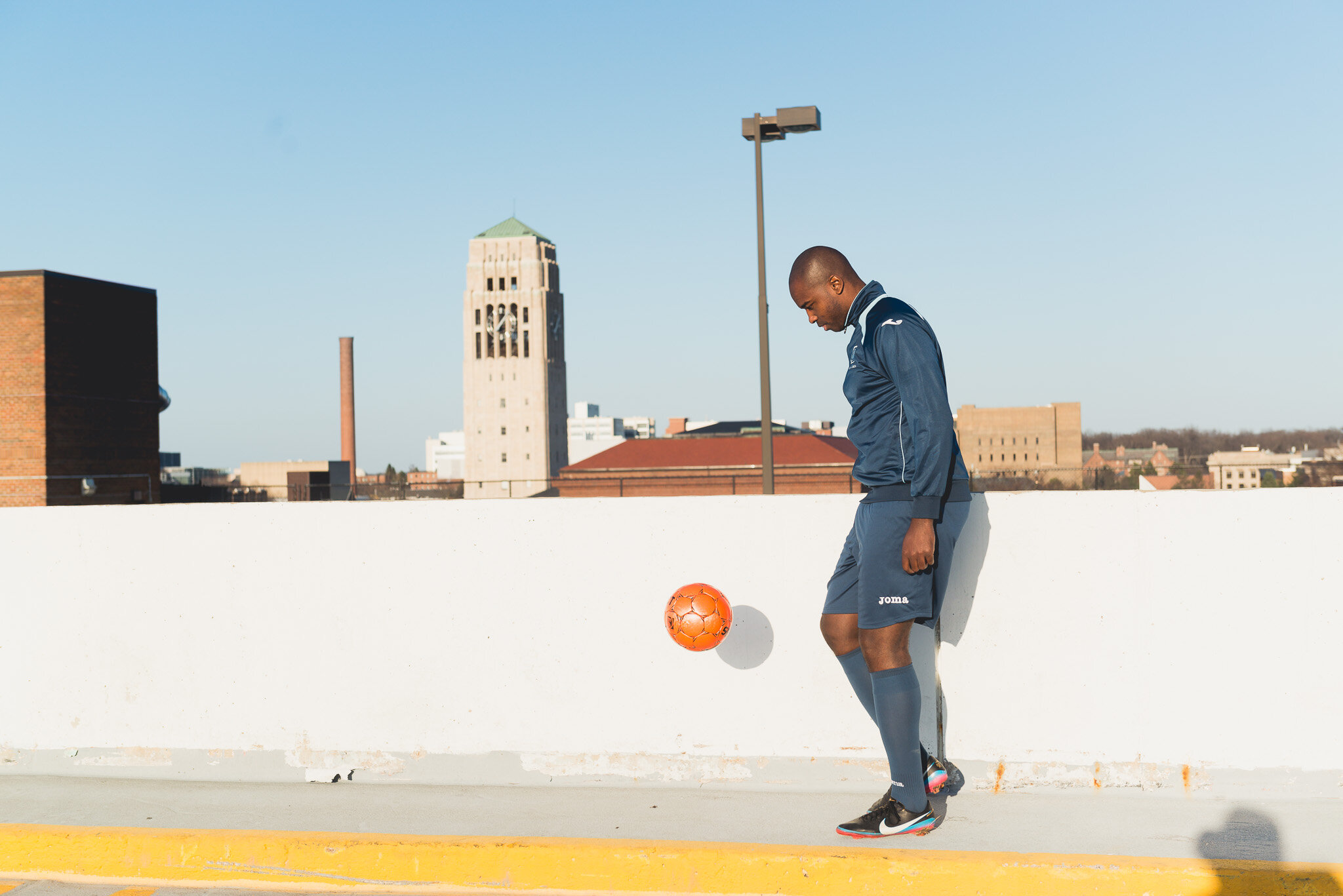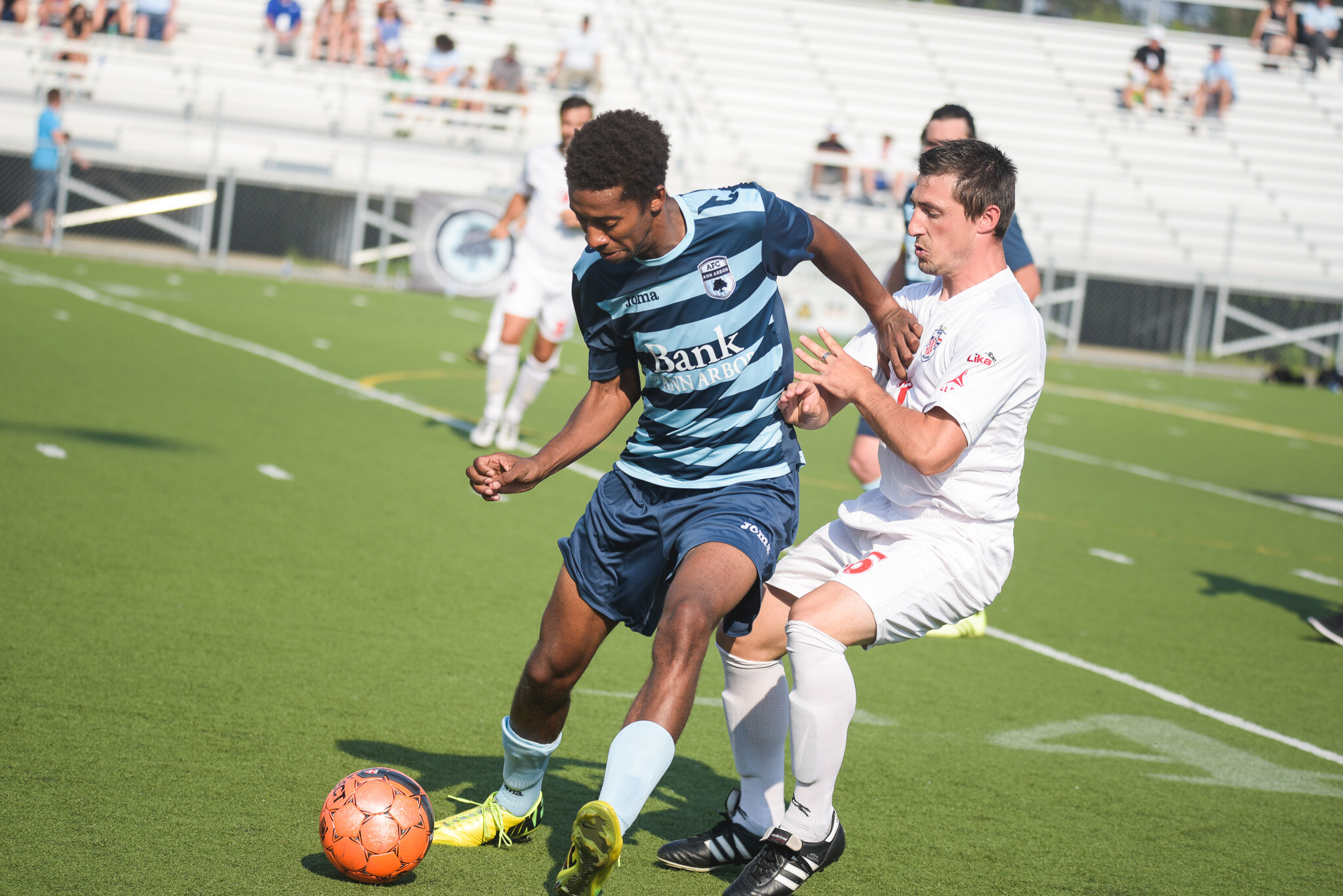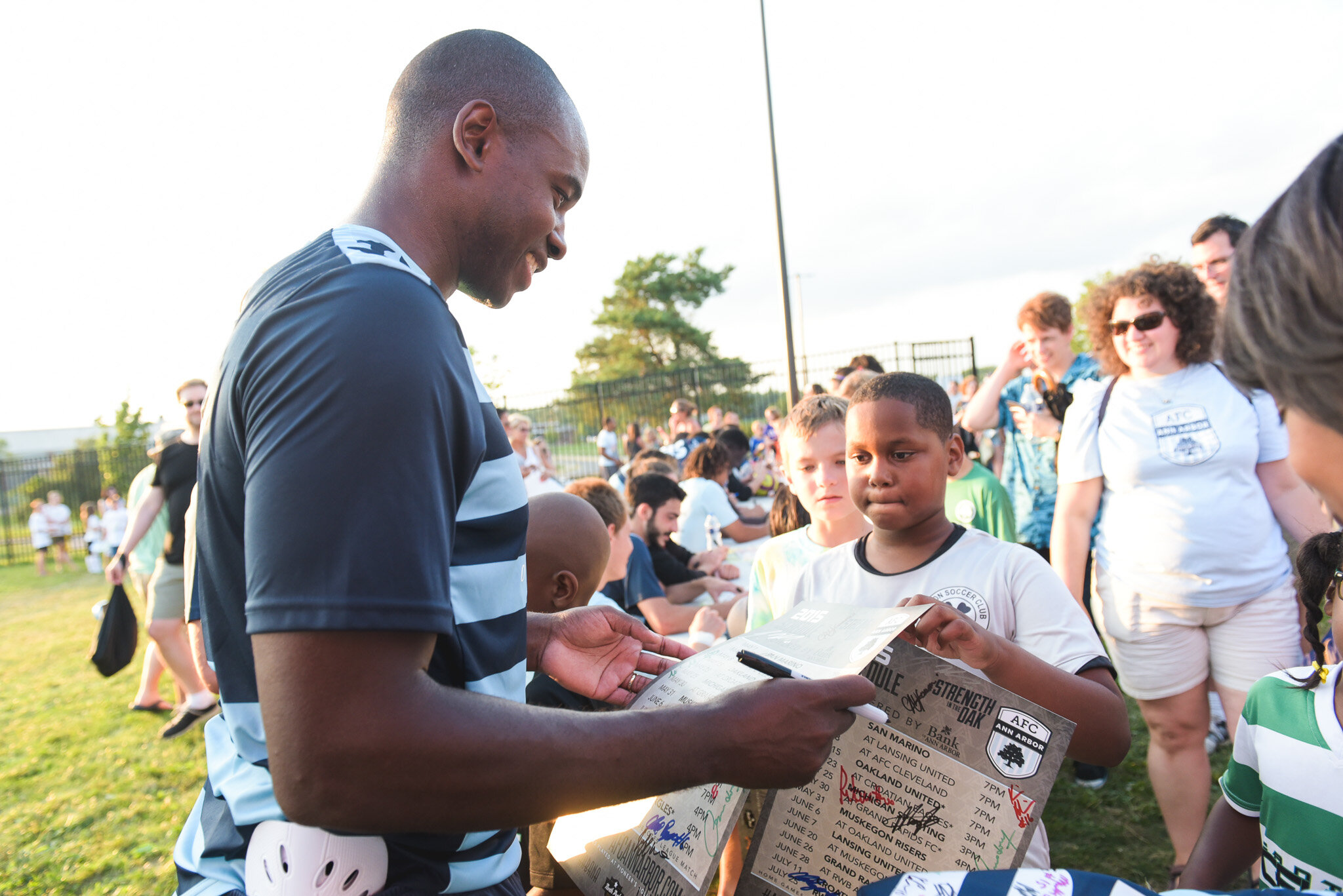By Ryan Makuch
This Black History Month, AFC Ann Arbor want to take time to shine light on those involved in Black History within our community and our club. We will be featuring members of either the AFC Ann Arbor Family or the Ann Arbor community each week in an attempt to celebrate the accomplishments of each of these men and women.
In 2000, the University of Michigan made the jump into varsity men’s soccer. As we approach what is nearing the 20th anniversary of the program’s establishment, now, more than ever is it important to acknowledge the members of those early teams, including two AFCAA Family members, and their role in the advancement of the sport in this city.
Kevin Taylor, one of those former-AFCAA players, was the first marquee recruit. Hailing from Miami, Florida, Taylor took one of his official visits up to Michigan and fell in love with Ann Arbor. Wanting to set out on his own away from Florida, he appreciated much about the opportunity. “You think of Michigan athletics now, and a lot of the sports, even the new teams, have the infrastructure built in,” he would say. “We didn’t have that.”
“He was the brave one,” Knox Cameron would say in regards to Taylor going to Michigan first. Taylor would also note how he felt that “People worry about their neighbor a little bit more here.” That, combined with the care that the coaches had for the program and those involved, made the move up to Michigan an easier sell for his parents.
The following season came two more touted recruits, and is the season that really set our story into motion. Knox Cameron, from New York City by way of Jamaica, and Mychal Turpin, a Michigan native hailing from Pontiac. For Cameron, the fact that these three cornerstone pieces of the program being Black did not go unnoticed. “Black kids playing soccer, at that time, there weren’t a lot of them,” he would note. The three men joining Michigan helped build the foundation for a team that was diverse and clicked well together.
Almost immediately, friendships were quickly formed. Cameron was hosted by Taylor during his official visit. “We had a good time,” Cameron said about his official visit. “I met a bunch of guys from the team, they were all good people. And it was a diverse group of people.” Cameron noted that he saw how Taylor was received and how in Ann Arbor, especially around the athletic campus of the university, athletes were celebrated for performing to their highest capacity and being good people.
Cameron, as a classmate of Turpin’s, also became near-instant friends. Turpin and Cameron both would note that they had at least known of each other throughout their time in the ODP (Olympic Development Program), and ultimately the pair would become roommates as freshmen and would live together for three of their four years as teammates. The pair were rather opposite of one another which both noted in different ways – “He’s a lot more intense than I am,” said Turpin about Cameron, while Cameron noted, “I can talk forever, given the opportunity, he’s a guy that’s a great listener” – but they made for a great duo on and off the pitch.
All three men also gave credit to Steve Burns, head coach of the Michigan men’s club soccer team, and eventually the varsity iteration of the program, throughout that first decade. Cameron noted Burns attention to detail off-the-pitch noting how Burns intentionally paired him and Taylor up for that visit and connected he and Turpin in a more concrete way during their recruitments. Taylor also would say, “He was here doing the legwork before a lot of the out-of-state kids got here. That was like his baby. In my eyes, Burns was the program.”
As time went on, changes in the program became more apparent. The team would go to the NCAA Quarter-finals in 2003, the second-best end-of-season finish in program history. The opportunity to represent Michigan was memorable not only for the results, though, but for reasons totally unrelated to soccer as well.
“It was a diverse crew not just in the color of their skin but where they came from that allowed for a lot of different opinions and it’s a way for younger kids to open their eyes to different types of people,” Turpin would note, and Cameron also echoed this with similar thoughts on how he was able to become friends with many people that he would not have interacted with without the experience of soccer.
Of course, all of these men are not just connected to the university, but to the city in their own ways. Cameron and Taylor both still live in close proximity while Turpin returned to Ann Arbor over some summers following his collegiate career.
“I see Ann Arbor as my team, we share similar values,” Cameron said. These beliefs were established early on in his experiences with the city and have remained to this day. Turpin also notes that the framework of Ann Arbor has been similar for a significant period of time, “Who lives in Ann Arbor is has obviously been the same for a long time now.”
However, especially with the perspective that they have, both Cameron and Taylor have noted that this way of life has not yet fully extended into surrounding areas. “I think Ann Arbor has always been a kind of diverse town, but a lot of the areas outside of Ann Arbor aren’t as diverse. If you go down the road to Saline, or the other direction to Dexter, that’s not the same,” noted Taylor. Cameron noted a very similar thing, emphasizing the struggles he had as a Black man in the role of Director of Coaching in the city of Saline. As a whole, these experiences and notes are a great reminder of the way we need to continue impacting our communities, both our immediate and surrounding ones, in a positive way to make experiences positive for all.
Still, the men agree that in itself, there is much to love about Ann Arbor. Cameron noted that outside of his two years spent in Columbus playing for the Columbus Crew, he has remained in Ann Arbor his entire life since moving here for college. Likewise, Taylor plans on settling down in the city, noting that it’s a great place to raise kids and start a family.
As for favorite places in the city, there was plenty of variety, but it all centered around food. Taylor singled out the restaurant scene as a whole, but gave a special shoutout to HOMES Brewery. Turpin noted the now-closed Prickly Pear, but gave special love to the Main Street area as a whole, as well as the Arb. Cameron had similar trouble narrowing it down to just one spot, but he noted the Jamaican Jerk Pit as having great food and the feeling of a slice of home in Ann Arbor.
All three of these men came to Ann Arbor to play under the umbrella of Michigan soccer. All three of these men ended their careers at Michigan but left a lasting impact on that program, the city, and still continue to make a positive impact on their communities, whether that’s in the area like Cameron and Taylor, or out on the west coast like Turpin.






